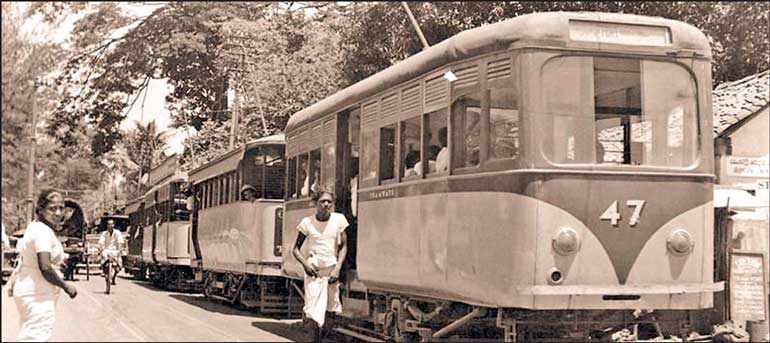Novel
Introduction
Definition of a novel
A lengthy fictional narrative in prose dealing with
characters
incidents
and
settings
that imitate those found in real life
Usually
the novel is concerned with the depiction of
middle class and working class characters
engaged in ordinary pursuits.
Novels
vary in type
form and subject
matter
so much that it is difficult to put the novel into a neat classification.
Elements of the novel
Setting
Plot
Character and Characterization
Methods of Characterization
Theme/s
Point of View
Setting
"The
general locale, time in history or social milieu, where the action of a work
of literature takes place. When the setting is used as a dominant influence on
the lives of characters it is said to give local colour to the narrative. Local
colour or regionalism can be noticed in the manners and customs of the
characters as well as in creating a unique and picturesque background.”
Plot
"The
careful arrangement by an author of incident in a narrative to achieve a desired effect. Plot is more than simply the series of
happenings in a literary work. It is the result of the writer's deliberate
selecting of interrelated actions (what happens) and choice of arrangements
(the order of happening) in presenting and resolving a conflict"
Character
and Characterization
A person in a literary work is like a person in real life,
a literary character's personal qualities and actions are limited by his/her
function in the story whether the character seems designed to fit the plot or
the plot is derived from the character
Character
At the center of the plot is the hero, or protagonist. The hero is usually an admirable figure. An exception is the anti-hero, an inept (having or showing
no skill; clumsy). or otherwise ridiculous character, who is presented
sympathetically, The plot follows what happens to the hero and is determined by
the hero's character in conflict with the antihero who is usually less
admirable than the hero.
Characterization
"The
method by which an author creates the appearance and personality of imaginary
persons and reveal their characters. Characterization is the ability to bring the people
of his/her imagination to life for the reader. It is judged one of the most
important attributes of a writer of fiction. Successful characterization is
also crucial to the development of a narrative, since the events that move the
story forward are strongly influenced by the natures of the persons involved.
Methods of Characterization
There is direct
description of physical appearance and explanation of character traits and
attributes. This
description may occur either in an introduction or in statement distributed
throughout the work. The author tells the reader what sort of person the
character is. This method is also known as ' telling' .
In the presentation of
character in action the author refrains from describing or commenting on the character. Instead he/she
shows the character in action; what he does, how she/he reacts to others. The author even shows how
others react to the character. Thus in this method of characterization, the
author allows the reader to make judgments about the character.
Representation of the
character's inner self
the author
explains the thoughts and emotions in the character by external events.
Theme/s
The main idea or
ideas that the writer expresses.
Theme can also be defined as
the underlying
meaning of the story.
The theme of a novel is more than its subject matter because an author’s techniques can play as strong a
role in developing a theme as the actions of the characters.
A novel’s theme cannot be interpreted in a specific narrow meaning because of its length and the range of characters it uncovers and the large number of conflicts and scenes it foregrounds, there can be a variety of interpretations of the main idea.
In short the theme is
the statement
that the novel seems to be making about its subject matter
Point of View
“The vantage
point from which a narrative it told” (The Bedford Glossary of critical and literary
terms). A narrative is typically told from a first person point of view or a
third person’s point of view.
Vantage
a place or position affording a good view of
something
First person point
of view
In the first person point of view, the author tells the events through a character who refers to himself as
‘I’
Such a narrator generally
plays a major role in the action.
The events are recounted as he/she experiences them or remembers them or
reflects about them. Sometimes a first person narration can have multiple
narrators, each of whom recounts his/ her own story.
Third person narratives
Third person narratives are of two types
omniscient (all-knowing)
and
limited
Omniscient point
of view
The omniscient
narrator, adopts
the point of view of an all knowing narrator who is able to recount the action
thoroughly and reliably as well as to enter the mind of the character in the
work at any time in order to reveal his or her thoughts feelings and beliefs
directly to the reader.
Limited point of
view
In the
limited point of view, the story is revealed through the eyes of a single character. The reader has access to the
inner thoughts and feelings of only one character and receives the story as
that character understands and experiences it, although not in the character’s
own voice. Such a narrator is generally an observer of the action or a
participant in it.
Second person point of view
This is very rare. There the narrator would address a
‘you.’
Bringing Tony Home
By
Tissa Abeysekara
A Brief overview of the author
Tissa Ananda Abeysekara the writer and the narrator of this novel was born on 7 May 1939 in
Maharagama and grew up in his ancestral house, Greenlands in Havelock Town.
later becomes a well-known writer and a
filmmaker and died on 18 April 2009.
He was also a well-known actor, writer,
director, screen playwright and political activist in Sri Lanka.
He began his
career as a short-story writer, writing in Sinhala,
He is better known as a script writer for the cinema as well as a film director
The novel
Bringing
Tony Home is an award-winning novel written by
Tissa
Abeysekara.
It could be rather introduced as an
eponymous novella
since
it is named after his pet dog Tony who is
the central character in the story
In 1996, the book Bringing Tony Home won the
prestigious Gratiaen Prize for the new creative writing in
English
Novella
A short novel or long short story
Eponymous
Giving
their name to something
In literary contexts, “eponymous” is often
used to describe works that have been named after their protagonist
‘Bringing Tony Home’ is an
intimate
Sri
Lankan novel
One of the first things that you might notice
about this novel is its
visually charged nature
Like
a movie, the moments in the novel
evoke
powerful visuals
images of a bygone era
images of nature
And
images of colourful people
This
might not be a surprise to you, considering the fact that the author is a
well-known film director in Sri Lanka.
The
novel is structured in three parts.
As if to suggest the
three different time periods of the narrator’s life:
his adult
life as a film-maker
his teenage years as a
restless stubborn and adventurous kid
and
finally
his life
as a
young adult
The
fragmentation
of the
novel acts as
a
brilliant foil
to the
changes that take place
in the
beautiful environment
of the
narrator
A Brief overview of the Novel
Tissa
Abeysekara the writer and the narrator of this novel was born on 7 May 1939 in Maharagama and grew up in his ancestral house, Greenlands in
Havelock Town.
later becomes a well-known writer and a
filmmaker and died on 18 April 2009.
He was also a well known actor, writer,
director, screen playwright and political activist in Sri Lanka.
He
began his career as a short-story writer, writing in Sinhala,
He is
better known as a script writer for the cinema as well as a film director.
When the
narrator is 3 years old, his family shifts the residence from Havelock town to
a
two
storied big house
in a
suburban village called Depanama
about 20 miles away from Colombo.
He
lives about 7 years there.
When
economic issues raise its head, they happen to change from the big house to a
smaller house in the same vicinity, and then completely
from
the area to a separate village called Egodawatta that is about 6 miles
away from the
small
house in Depanama.
The
ten-year old narrator who is then in Egodawatta lives there another 20 years
until he is 30 years old.
Next we
see him as a grown up adult back in the vast paddy field in front of the
Nawinna
railway station
to record his 12-hour TV series
The
Plot
The
novel is structured in
three stages
or
three
movements
The 1st chapter is titled as
“The Sunset”
The
episode which describes
the
present situation of the narrator
We see
him driving home from TTI
after
finishing his 12-hour long TV series and hands over it to be telecasted.
He
presents his recent memories related to his film production and reasons for him
to select the vast paddy field in front of the Nawinna railway station as his 1st film location.
The
beautiful scenery of the sunset over Attidiya marshes was something he
enjoyed most during his childhood.
The paddy field is the place where he played and enjoyed with his play mates and he wanted to have the sun set and the vast stretch of paddy field as the backdrop of his last episode of the film.
So he titled the 1stchapter as
“The
Sun Set”
The 2ndchapter is titled as
“Tony”
The episode which describes
strong
bond the narrator
had with his pet dog
Tony is the pet dog.
The
narrator has a strong bond with his animal friend.
Since
he hasn’t schooled even until 10 years of age, Tony must have been his best
friend.
When
the narrator’s family change their residence from Depanama toEgodawatta, that makes them leave the dog behind in
Depanama alone.
Being
angry and sad, he vows himself to bring Tony home not by any other means but on
walking.
The narrator completes his secret mission when he is sent back to Depanama by his mother to collect the vital ration books.
So, he makes a heroic attempt to
bring Tony to his new house and consequently falls ill due to the strenuous
effort made by walking such a distance.
Tony doesn’t
stay in the new house.
He disappears apparently because of the maltreatment made by the adults.
He disappears apparently because of
the maltreatment made by the adults. However, he listens to his parents’
comforting words and learns to reconcile to normal life.
In 3 weeks’ time he is again made to go back to Depanama
He
meets Tony again.
The dog
has suffered a lot. He is sick and starving.
He breaks away from the dog for good Tony was abandoned forever.
The
narrator starts schooling.
He
becomes secretly addicted to brooding and going back to past with his flash
back memories of the friend dog.
Since this
chapter is mainly about Tony
the
dog, it is titled as
“Tony”
The 3rd chapter which is
“The Little Train”
The movement which describes
the narrator’s revisit to his childhood
locality
This
brings the reader to the narrator’s revisit to his childhood environment.
After
finishing the TV series and hands over it, he makes this revisit 46 years later
only to see the change in scenery.
He notices a change in houses, vegetation, people, roads etc.
During
his revisit, he becomes nostalgic and gets stranded in his memories and moves
along the lane of memories until he gets the utmost evocation of his little
dog.
Whenever he gets lost in in his nostalgic feelings, the little train with its melancholic whistle is also heard by him without a miss.
Train
is the main object caught by the change.
So, the 3rd chapter is titled as
“The Little Train”
Themes
The main idea
or
understanding the meaning of the story
Strong bond between man and animal
The change taken place with the time
(Socio-economical change within the time
span) & Change in people
Change in the environment and location
Relationship between children and parents
The life of the people in a by-gone era
Needs of a child
Human beings have nostalgia for their own past
Strong bond between man and animal
The story brings out especially the narrators bond with his dog “Tony”
The
attitude of a little child
towards a dog
Instances which shows Tony's attachment towards the family and the narrator
Lives about seven years with the narrator
Could sense the arrival of a family member even before 5 minutes at a distance
Shows love and intimate affection in his own canine style
Follows and tries even to get into the bus
Is able to get the scent of the narrator wherever he happens to be around
Ignores even the bun because he doesn’t want to lose the contact again.
Always demands the affection of the narrator
Occurrences which shows the
narrator’s attachment towards the dog
Vows himself to bring Tony
Is sad and angry when the separation takes place
Walks with the pet for the fear that
he will lose it
The dog is tied to his short buckle (shows the strong
bond with the pet)
Shows affection by even kissing the forehead
Increases his pathos when Tony disappears from the new home at Egodawatta
Terminates the contact forever for his own good since
adults maltreats him
Remembers Tony on multiple occasions
Becomes nostalgic and gets lost among the memories of his childhood pet even
after he grows up into an adult
always finds the dog as the end icon of his memory lane
The change taken place with the time
(Socio-economical change within the time
span) & Change in people
The family itself changes from rich to poor
The narrator himself changes and decides to
end the long year relationship
He changes from a reserved child to a stubborn child and then to a playful, active school going teenager and finally to a reputed film producer.
All his teenage friends change and find their paths.
(Sirisena, Munidasa, Ranal and Theliya)
His mother changes from being strict to lenient
Change in the environment and location
Beautiful panoramic view of the expanse of the paddy
field is obscured by the Arpico Showroom
The “Niyara” is converted into a macadam road
RAF (Royal Air Force) camp becomes the University of Jayawardanapura
The sleepy little town Maharagama is now a
populated city
Rubber and paddy fields disappear and
they are replaced by buildings and houses
Boralesgamuwa tank converts
into a muddy hole
The little train changes into a bigger one
Relationship between children and parents
The life of the people in a by-gone era
simple and unsophisticated
Needs of a child
Maintain the relationship with the dog and keep it as his pet
wants to have the love of the parents
need of going to school and get
education
be friendly with the neighbouring children and find playmates
Human beings have nostalgia for their own past.
Characterization
Narrator
the well known artist
He was a director and screen
playwright
He writes the script for his better known tele drama ‘Pitagamkarayo’
He was extremely sensitive during
his child hood
As an adult he had a strong attachment
to his past
the 10 year old boy in the story
Doesn’t go to school until 10 years old
may be due to the illness of getting Fit
Pet
dog is the best companion due to the lack of school mates
Highly sensitive
Capable of showing affection
Quite emotional
“I kissed him lightly on the forehead……”
Page 19
Brave
and takes challenges
“I was going to take Tony home……………”
Page 23
Empathetic
(Compassionate Concerned Sympathetic)
He feels how the dog would be in all its
reactions
He doesn’t show any difference to Ranal when
others jeer at him
Seek pleasure by brooding about the memories related to
his pet dog
“I would love to take a corner seat and watch…”
“..It had become a secret addiction”
Page 82
Possessed with most of the other characteristics that an average child
exhibit
Obedient to parents
Playful and roam with friends in the field
Sometimes stubborn and mischievous
He later finds a lot of friends
Starts schooling and gets education
Grows into a big responsible adult
Tony
The animal friend who has a long-time
friendship with the narrator
“Tony
came out of nowhere……….in a delirium”
Capable
of showing love and affection
“Tony
the mischievous pup was pulling at the fields of my pyjama…”
Playful
Intelligent and understands the human
behaviour
“Tony the mischievous pup was pulling at the
fields of my pyjama…”
At the early stages of its life it leads a very comfortable and life and cared
and loved
was tortured and later abandoned and neglected
Faithful
Mother
Faces problems in life courageously
Harassed by poverty
Internet
Teacher manual
Grade11 study pack























Comments
Post a Comment